Cart 0
0 item(s) - 0р.BYN No products
To be determined Shipping
0р.BYN Total
Quantity
Total
Product successfully added to your shopping cart
There are 0 items in your cart. There are 0 items in your cart.
Total

Five tips for using your 3M™ Littmann® Stethoscope properly.

Five tips for using your 3M™ Littmann® Stethoscope properly.
Littmann stethoscopes are known for first-class sound quality and comfort. But there are some simple things you can do to ensure the performance and wearability of your new scope.
1. Align the headset
Before placing the eartips in your ears, make sure they point forward, away from you. (Figure A) This ensures that the eartubes will align with your ear canals for comfort and maximum sound transmission. Holding the headset in front of you with one eartube in each hand, pull the headset open and place the eartips into your ears. (Figure B)
If the fit isn’t comfortable, or acoustic performance is lacking, adjust the headset tension. All Littmann stethoscopes feature adjustable headsets. Gently squeeze the eartubes together to increase headset tension; pull them apart to decrease tension.
Wearing the headset improperly, (eartips pointing backwards, for example, as in Figure C) can result in a poor acoustic seal and, in some cases, complete sound blockage.
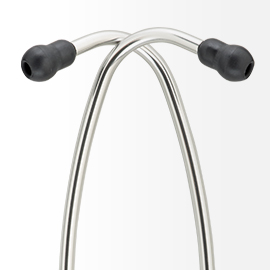
 A. Proper Insertion
A. Proper Insertion  B. Correct Positioning
B. Correct Positioning  C. Incorrect Positioning
C. Incorrect Positioning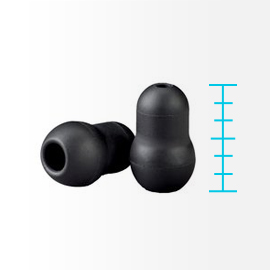
2. Use the right eartip size
For optimal acoustic performance, it’s important to use the eartip size that best fits your ear. This is especially true when using the soft-sealing eartips. All Littmann stethoscope eartips are available in small and large.
3. Rotate to the correct side
When using a double-sided Littmann stethoscope, you need to open (or index) the side you want to use—bell or diaphragm—by rotating the chestpiece. If the diaphragm is open, the bell will be closed, preventing sound from coming in through the bell, and vice versa.
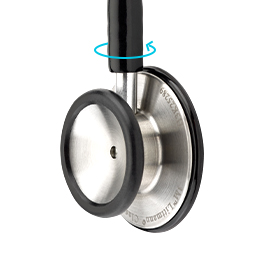
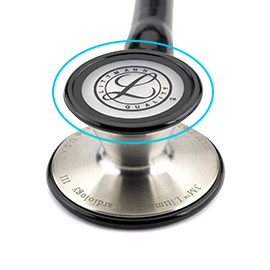
4. Remove potential obstructions
If you usually carry your stethoscope in a pocket, or don’t clean it often, lint or dirt may accumulate and obstruct the sound pathway. To prevent debris from accumulating, give your stethoscope routine cleaning and care. If you use a 3M™ Littmann® Cardiology III™ or Classic III™ Stethoscope, keep the open bell free of debris by covering it with the removable diaphragm.
5. Check the seal
Stethoscopes rely on an airtight seal in order to transmit body sounds from the patient to the practitioner’s ears. Loose parts in the chestpiece, loose or cracked tubing, or improperly seated eartips can prevent an airtight seal.
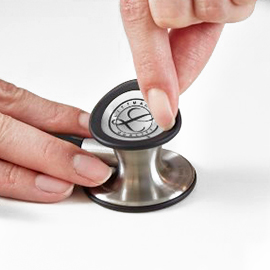
Leave a CommentLeave a Reply
You must be logged in to post a comment.

